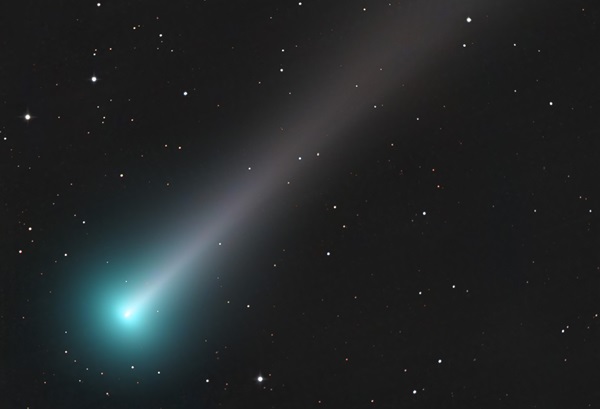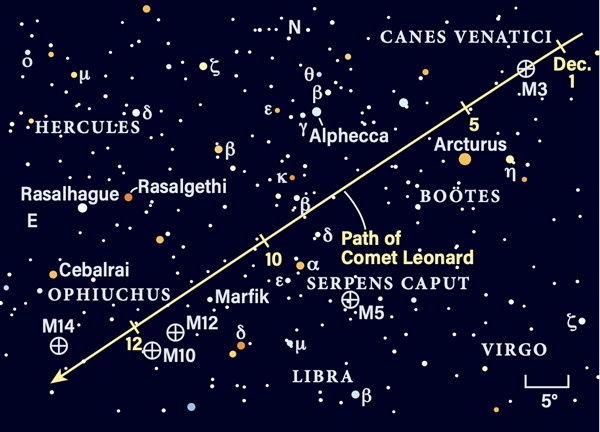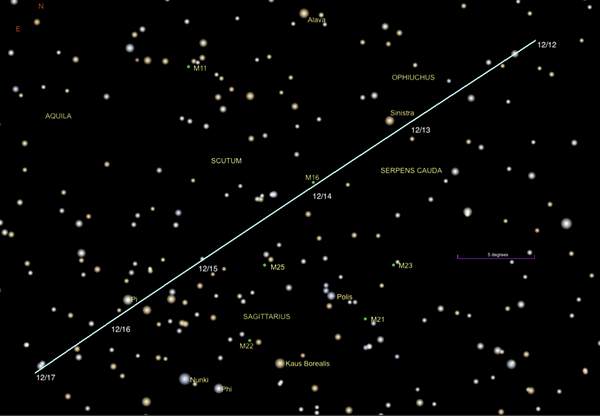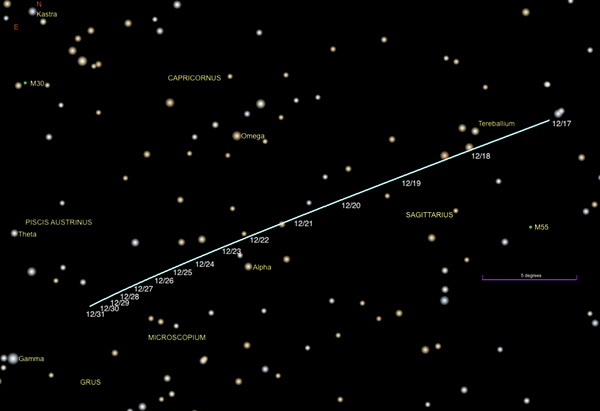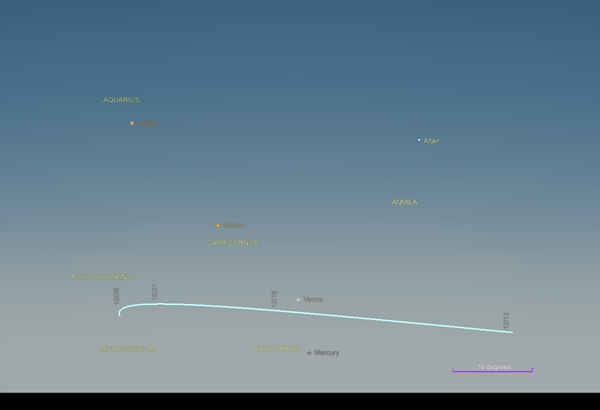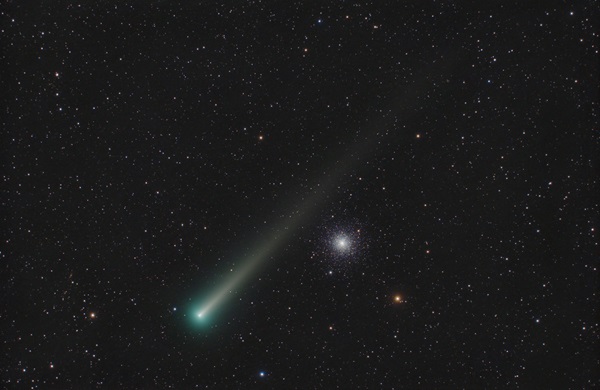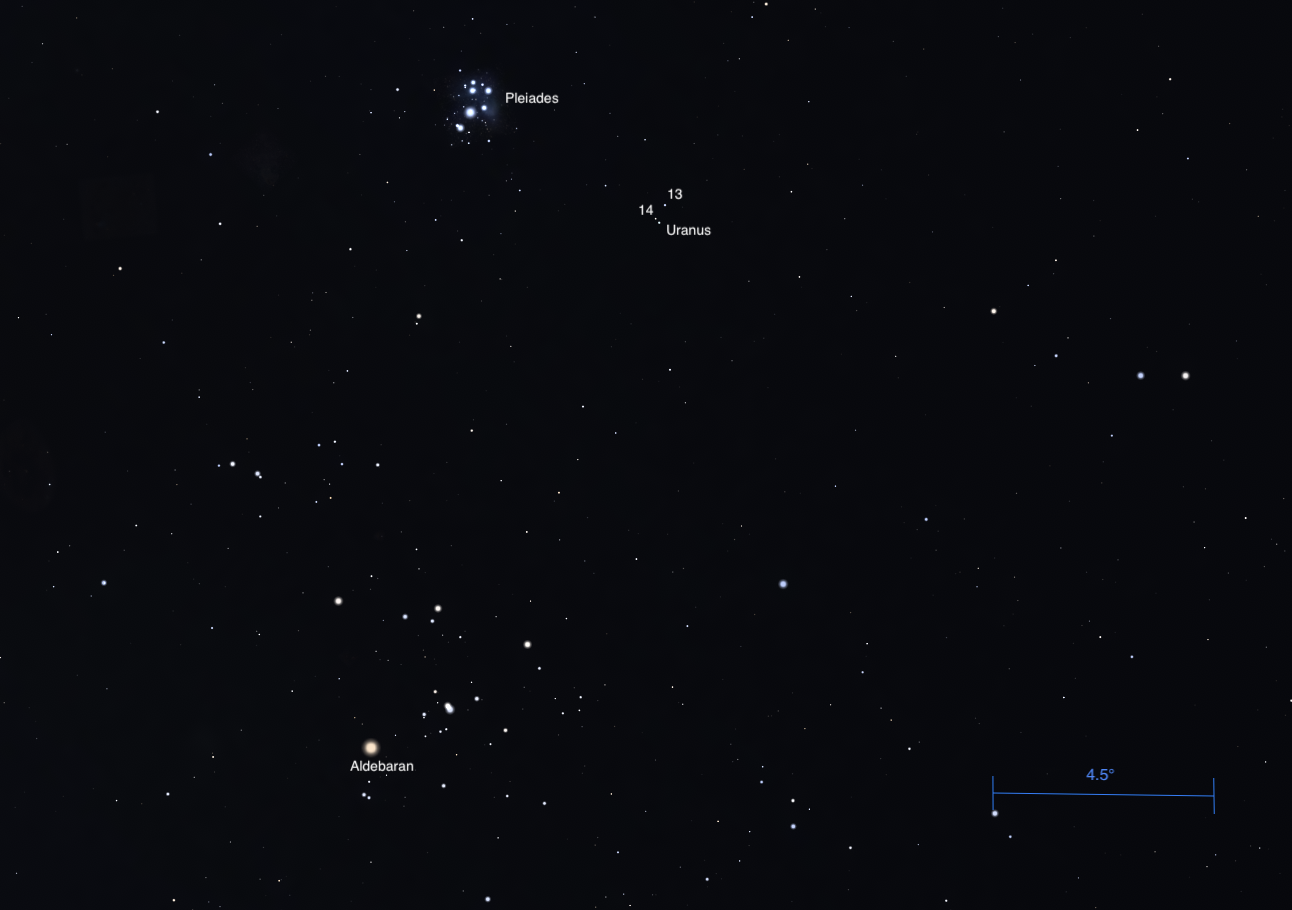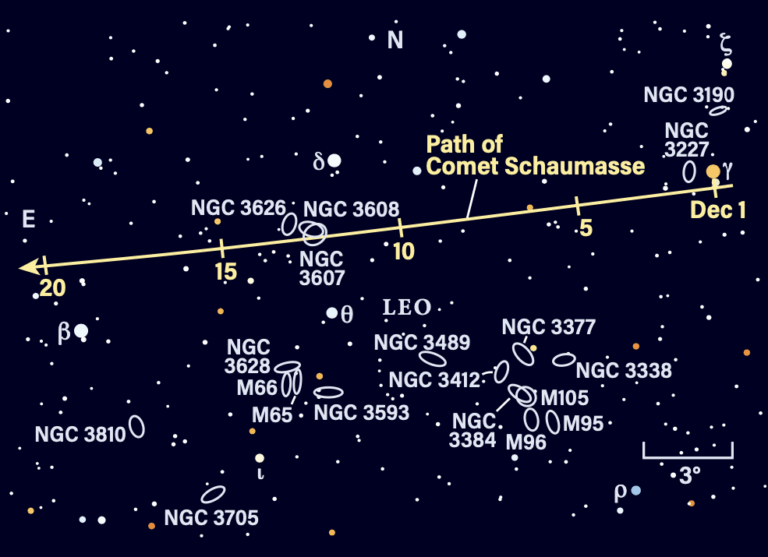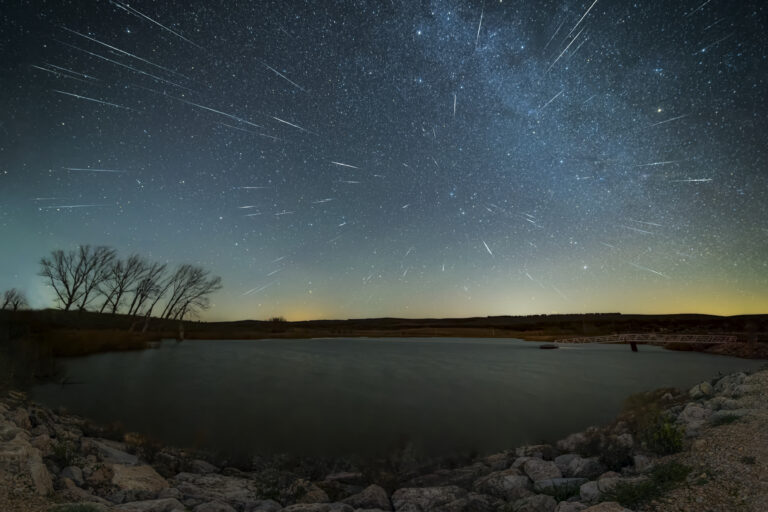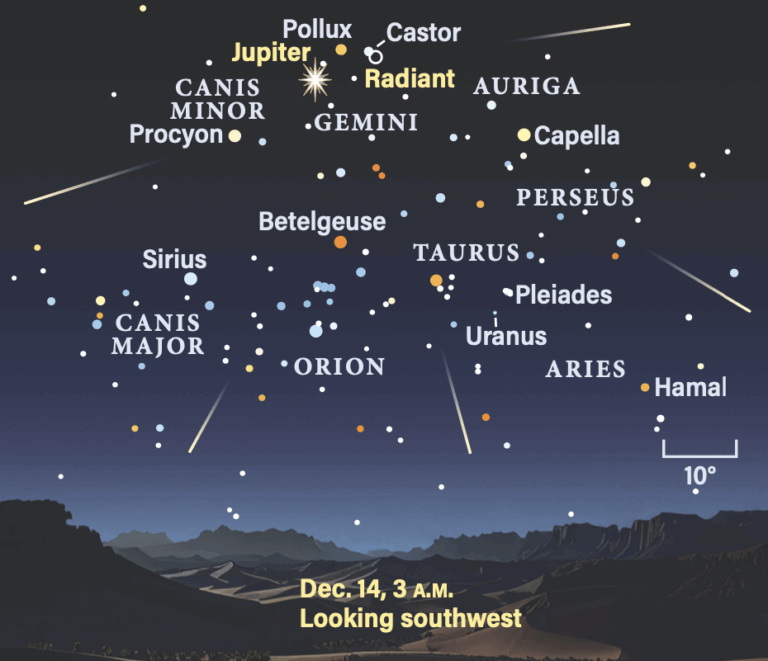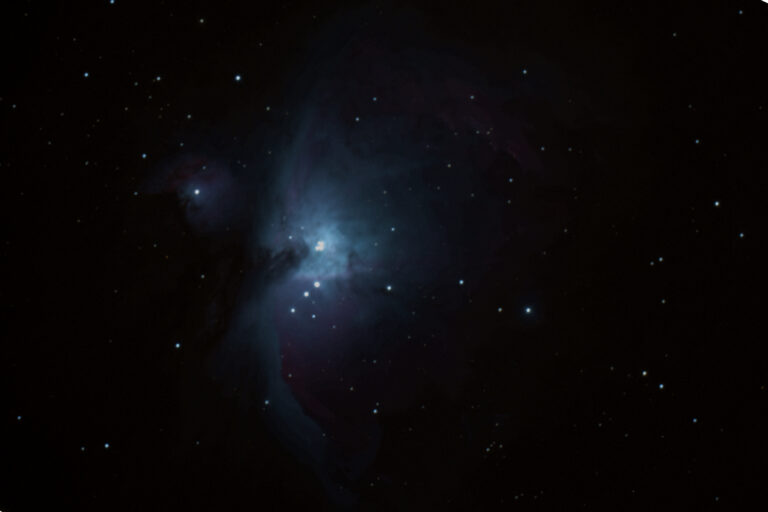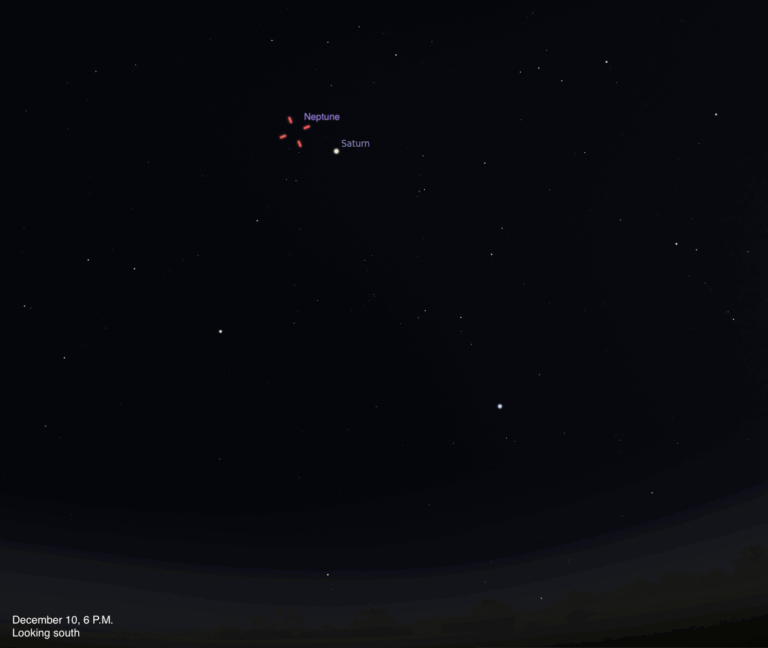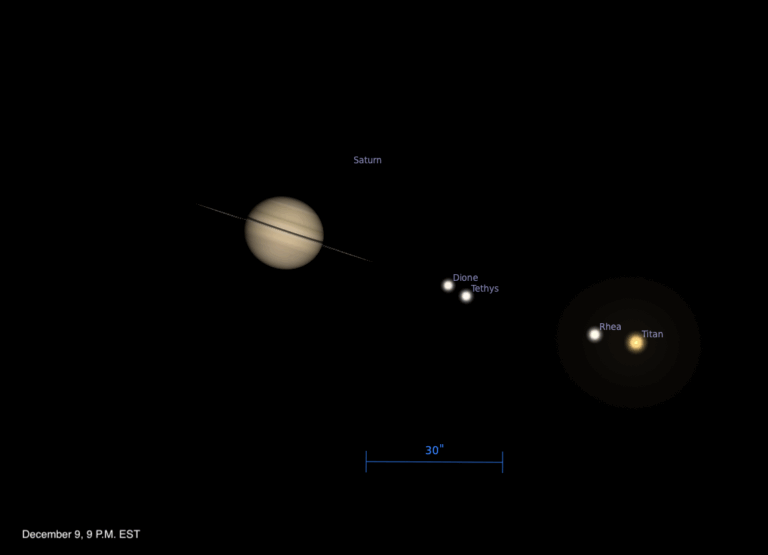Key Takeaways:
Comets pass through our skies frequently, but not many manage to crack naked-eye brightness. That’s why, when one gets close to or crosses that threshold, it’s worth taking notice.
And now, it’s time to take notice of Comet C/2021 A1 (Leonard), which makes its closest approach to Earth this week. Comet Leonard has been reported at around magnitude 5.5 to 6 — brighter than that naked-eye threshold if you’re in a dark location with little to no light pollution. And even if you aren’t able to get yourself to the perfect observing spot, Leonard is readily visible with binoculars or a telescope.
Even better, it’s about to switch from a predawn sight to an early evening one, meaning you don’t need to be an early riser or a night owl to catch a glimpse of 2021’s best comet.
Where did Comet Leonard come from?
As its name suggests, Comet Leonard was discovered in January of this year by Gregory Leonard, who spotted it in images taken from the Mt. Lemmon Observatory in Arizona. The discovery came about a year before the comet’s calculated perihelion — its closest approach to the Sun — which occurs next month on January 3. Right now, Comet Leonard is approaching Earth as it flies toward its rendezvous with the Sun, and it will make its closest pass to our planet December 12.
Leonard is a long-period comet, hailing from the outer regions of the solar system with an aphelion distance — its farthest point from the Sun — of some 3,700 astronomical units (AU), where 1 AU is the average Earth-Sun distance. Its orbital period is roughly 80,000 years. But that’s about to change: Calculations currently show the comet will be ejected from the solar system after it passes the Sun, destined to fly off through interstellar space, never to return. Perhaps it will even one day pass through another star system light-years away, just like the interstellar objects 1I/’Omuamua and 2I/Borisov recently passed through our own solar system.
When and where to observe Comet Leonard
For the next few days, Comet Leonard is best seen in the early morning before sunrise. To find it, look east one to two hours before sunrise. It will climb highest in the sky right before dawn, but the sky will also be lightest at that time.
Below is a telescope finder chart that shows the path of fast-moving Comet Leonard in the morning sky until December 12. Note that it skims through several constellations in just a few days — if you take the time to watch the comet for an hour or so, you’re likely to notice it moving against the background stars in a single observing session. Before Leonard leaves the morning skies, it also poses nicely with several globular clusters: M12, M10, and M14.
If you want to broadly know how high to look in the sky, check out the chart below, which shows the rough position of the comet about 30 minutes before sunrise from the midwestern U.S. Note that the chart shows the general positions of the constellations, as well as the location of Mars and any bright stars, on December 10; these guideposts may appear slightly higher or lower in your sky, depending on the date and time. In other words, this chart is less accurate than the telescopic finder chart above.
Comet Leonard takes the night shift
On the 12th, it’s time to switch to early evening observing for your best view of Comet Leonard. At this point, it’s best to step outside at sunset to look for the comet in the southwest as it first moves past Venus and Mercury, then Saturn and Jupiter.
Below is a telescope finder chart showing the path of Comet Leonard in the evening sky from December 12 to 17. The next chart goes on to show its nightly motion through December 31. We’ve split these into two charts because Leonard is still quickly crossing the sky mid-month, then slows to a crawl later in December. Also, if you’re looking to do some deep-sky photography, keep in mind that Leonard passes close by M16 — and just a bit farther away from M23, M21, M25, and M22 — during the middle of the month.
To give you an idea of where to look in the sky, below is a chart showing Leonard’s altitude above the evening horizon in the latter part of December. The positions of the constellations, stars, and planets are shown on Dec. 25 about 30 minutes after sunset; they may appear at different altitudes (and the comet may be in a different constellation) depending on the date and time you’re observing. Again, this chart is less accurate than the telescopic finder charts above.
How to observe Comet Leonard
Depending on the comet’s magnitude, the time, and your location, you might be able to barely spot a faint, fuzzy patch with the naked eye. If you can’t, simply use binoculars or a telescope to locate the comet, which should pop out pretty well against the background when employing optical aid. And regardless of what it looks like to the naked eye, this comet is best seen in photographs. So, now is the time to grab your camera — or your smartphone — and snap some pics!
Leonard should grow brighter over the next several days, reaching its brightest between about Dec. 12 and Dec. 14. After that, the comet is expected to fade down to magnitude 8 or so by the end of the month. However, that’s still a fantastic binocular or telescopic sight, so don’t stop following it, even once it starts fading.
Keep looking up
Once Leonard is gone, keep hold of your cometary excitement — it will serve you well early next year, when in April, it’s possible that Comet C/2021 O3 (PanSTARRS) could flare up brightly enough to rival planet Mercury in the sky.
Of course, cometary behavior is notoriously hard to predict — do you remember the disappointing breakup of C/2019 Y4 (ATLAS) as it rounded the Sun, robbing us of potentially the brightest comet to pass Earth in two decades?
So the best we can do is to keep our fingers crossed — and enjoy our current spate of good luck as Comet Leonard continues to arc across the December sky.
Stay up to date with the latest details on Comet Leonard and other celestial sights by checking out our weekly observing column, Sky This Week.

